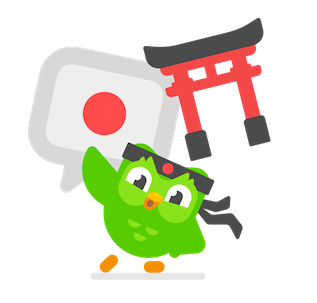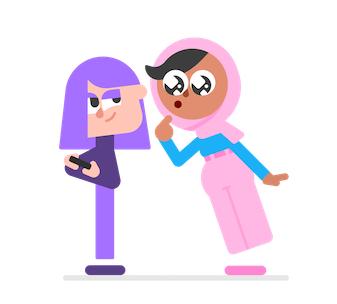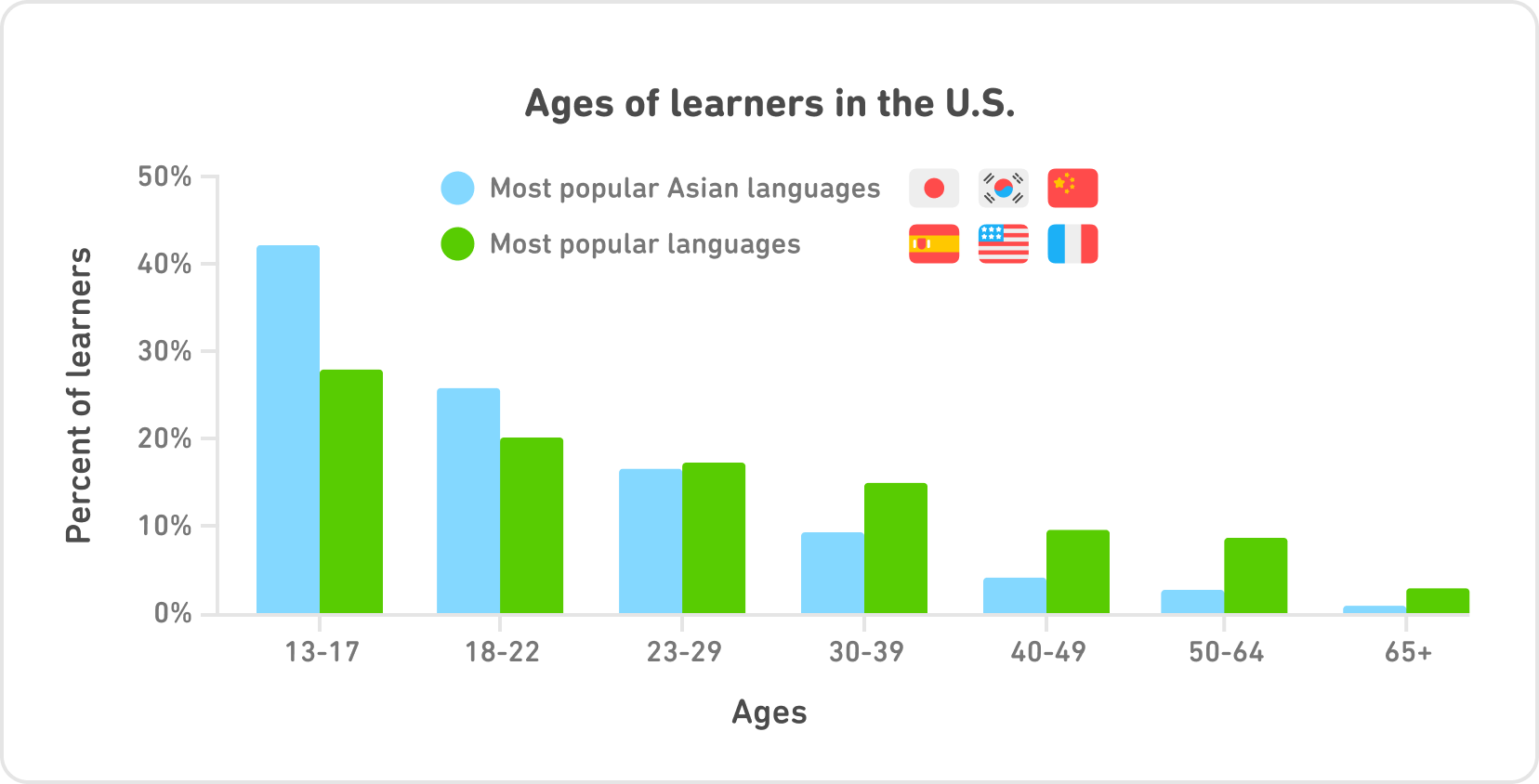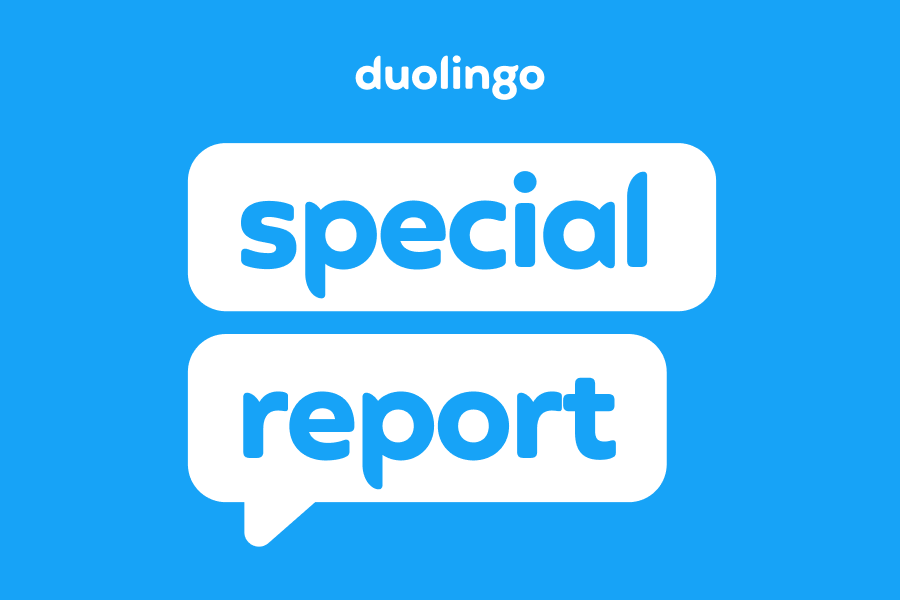As part of Asian American and Pacific Islander Heritage Month, we’re taking a look at the languages spoken throughout Asia and the Pacific. These regions are considered the most linguistically diverse in the world: they’re home to more than 3000 of the world’s 7000 languages! Asian languages are also some of the most popular courses on Duolingo, and our 2020 Duolingo Language Report revealed that learners in countries as diverse as Mexico, China, and the U.S. are excited about studying languages from these regions.
In this post, we’ll be celebrating the linguistic diversity of Asia and the Pacific, and we’ll also take a look at the learners who study our most popular Asian languages!

Japanese is the most popular Asian language in the U.S.
Japanese is by far the most popular Asian language to study in the U.S.: it’s the 4th most popular language (even ranking ahead of German and Italian), and it’s the most popular Asian language in all 50 states, D.C., and Puerto Rico.
And Korean and Chinese aren’t far behind! Korean ranks 7th overall in the U.S., and Chinese is right behind it in 8th place. These two languages are also virtually tied in all states!
Hawai’i is the state most interested in Asian languages
When it comes to learning languages from Asia and the Pacific, no state can match Hawai’i. The top languages studied in Hawai’i are Spanish (#1), Hawaiian (#2), Japanese (#3), French (#4), and Korean (#5). That’s three Asian and Pacific languages in the top five! In fact, over 25% of learners in Hawai’i are studying Japanese, Korean, or Chinese, making it the U.S. state most interested in learning Asian languages. California comes in at #2, and Washington state is #3.

Younger learners are leading the way
Asian languages are especially popular among younger learners, and they are driving the overall trends that make Japanese and Korean the most popular Asian languages in the U.S.
In the U.S., 83% of people studying Japanese, Korean, or Chinese are under 30, and 42% of Asian language learners in the U.S. are between 13 and 17. For comparison, in the U.S., 65% of learners studying Spanish, English, and French are under 30, with just 28% of them between 13 and 17.

Japanese is the most popular Asian language to study across all age groups—it peaks at #3 for learners 13-17—but there are interesting differences across other age groups. Korean is the second favorite Asian language to study for learners 13 to 22, but learners 23 and over (all the way up to 80!) prefer Chinese to Korean. It’s truly Gen Z leading the way and driving the incredible growth of Japanese and Korean in the overall U.S. ranking.
Asian language learners are motivated by culture and family
Duolingo learners in the U.S. who study Japanese, Korean, or Chinese report having different motivations for language study compared to learners of the three most popular languages (Spanish, English, and French). Japanese and Korean learners are especially interested in learning for culture, which could include history, music, movies, literature, and more. Chinese learners are more motivated to study for family reasons and brain training (as a mental workout!) than learners of other languages, even compared to other learners of other Asian languages.
Diverse cultures, diverse languages
Japanese, Korean, and Chinese are the most popular Asian languages to study on Duolingo, but we teach many other Asian and Pacific languages, too![1] Have you tried any lessons in these languages?
- Hindi is distantly related to English. They’re both descended from the same ancient language (Proto-Indo-European). So even though these languages might seem really different today, they share a lot of vocabulary and even follow similar grammar patterns, like changing the ending of a verb depending on who’s doing the action. (Not all languages do that!)
- In Turkish you have to say how you know something. There are different verb endings for whether you know something because you have direct evidence for it (like having seen it for yourself), or if you instead learned about it indirectly!
- Vietnamese is a tonal language, like Chinese. Each word in Vietnamese has a special pattern, or tone, of how your voice has to move while you say the word—your voice might have to go up, or down, or down then up, etc. But unlike Chinese, Vietnamese is written using the Latin alphabet (same as English) and all the tones are written on the words, like accent marks!
- The Arabic word for “the” gets used in lots of languages, including English. In Arabic, al- is a prefix that means “the,” so “alcohol” (which comes from Arabic al-kuHl) means “the alcohol” in Arabic. That means that when we say “the alcohol” in English, we’re really saying “the the alcohol”! Sometimes Arabic words were adopted without the al-, so the Arabic word al-quTun became “cotton” in English (from just quTun) but it became algodón in Spanish (from the whole al-quTun)!
- In Indonesian, words for people can vary according to age and level of respect. Indonesian has many more nuanced levels of respect than the two levels of formality you might have seen in some European languages (like tu and vous in French). Besides just formal and informal, Indonesian makes distinctions between people you actually know and can be informal with, people you can be casual with but don’t know, and formal situations with people younger than you (versus older than you). Differences in words for men and women are less common, but level of respect is key!
- Hawaiian has two different ways to say “we.” Which you use depends on if you mean you and the person you’re speaking to (“We [me and you] are competing in Diamond League this week”), or if you mean you and someone who isn’t there (“We [me and singer-songwriter Halsey] are both studying Turkish”).
- Hebrew words are formed from three-consonant “roots.” An example is the root k t b, which forms the base of the words for “to write,” “spelling,” and “reporter,” once different vowels and prefixes and suffixes are added. Any time you see a word with k t b, you’ll know the meaning has something to do with writing and recording!
Try one of our Asian and Pacific language courses today!
There are as many languages in Asia and the Pacific as there are reasons to celebrate the cultures and communities of these regions! Duolingo offers you a taste of the language diversity of Asia and the Pacific, and millions of learners worldwide have already made these courses some of our most popular and fastest growing. Which Asian or Pacific language will you try today?
Special thanks to the language and teaching experts who contributed to this post: Dr. Hope Wilson, Dr. Emily Moline, Dr. Lisa Frumkes, Dr. Isabel Deibel, Dr. Emilie Zuniga, and star software engineer Matthew Salim.
Sometimes it’s not so clear where a language is “from”! While Turkey itself has close ties to both Europe and Asia, here we categorize Turkish as an Asian language since it and other Turkic languages have their roots throughout Asia and especially in Central Asia. Hebrew is spoken in Israel (in the Middle East, in very western Asia) and is also used by Jews throughout the world for religious purposes. Arabic is also spoken in many places throughout the Middle East, but it is also the language of many countries in North Africa. ↩︎
